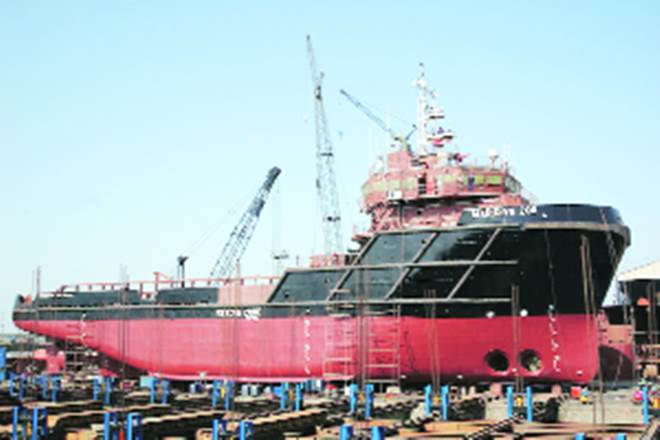The Rs 10,000-crore loan recast of loss-making shipbuilder ABG Shipyard has failed, bankers familiar with the development told FE, adding they would be initiating recovery measures in the debt recovery tribunal (DRT). The loan had been restructured in the corporate debt restructuring (CDR) cell.
Financial institutions, including Life Insurance Corporation (LIC) have a near majority stake of 50.42% in the company. The promoters have an equity holding of just 9.74% while 23.5% is held by corporate bodies.

Bankers explained they had not been in a position to take any legal action so far since the company had been within the fold of the CDR. Once it is out of the cell’s purview recovering dues via the DRT would be an option. No discussions have taken place yet on moving the National Company Law Tribunal (NCLT) for recovery.
The recast, cleared by a consortium of 22 lenders in March 2014, failed because ABG Shipyard was unable to meet the norms, including allotting adequate equity to lenders, they said. The firm was given 10 years to repay, with a moratorium on interest payments of two years.
In 2016, banks tried to initiate a strategic debt restructuring (SDR) scheme by converting the firm’s debt into equity. However, that proved to be unsuccessful as the firm’s shareholders voted against the resolution. The company is promoted by ABG International (9.36%), Rishi Agarwal (0.28%) and Kamlesh Kumar Agarwal (0.09%). The failure of ABG’s restructuring together with those of three other companies in January has taken the total value of failed recasts to Rs 1.36 lakh crore.
The primary reason for most recasts not succeeding is the inability of promoters to infuse the requisite equity capital in the defined period. Moreover, several promoters have not complied with the CDR agreement in terms of pledging shares in favour of the consortium of lenders.
You may also like to watch:
The restructuring schemes also often fail because promoters are unable to sell non-core assets to mobilise resources as promised.
While the moratorium is generally maintained at two years, lenders need to estimate when the company is able to start servicing its debt. If a company can’t generate sufficient cash flows even after five years of recast, then it is not considered viable to be recast.
In 2014, four other companies, with a total debt obligation of Rs 14,000 crore that had been restructured to make it easier for them to repay their loans, failed at the CDR cell.
Once the asset is out of the CDR fold, banks have the option of either writing it off or keeping it on their books as an NPA They can also sell the loan to an asset reconstruction company as they did with Bharti Shipyard (Rs 5,800 crore) and Hotel Leelaventure (Rs 3,000 crore).
The CDR cell did not receive any recast requests in FY16 and just one so far in FY17. In FY15, the cell approved 54 cases worth Rs 72,560 crore.
Lenders approach the CDR to provide some relief to companies under stress by means of reducing the rate of interest being paid and also offering a two-year moratorium on interest payments.


